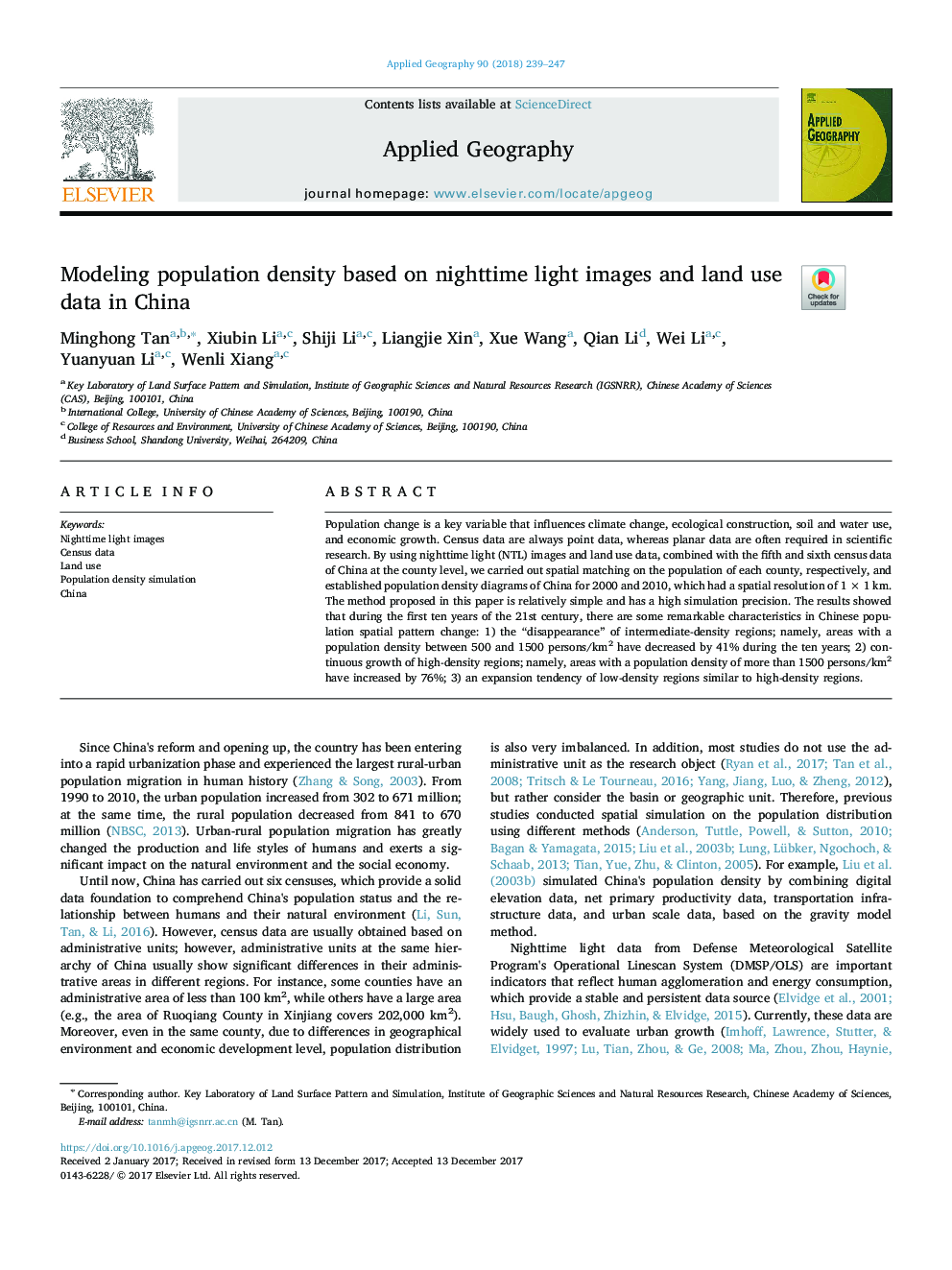| Article ID | Journal | Published Year | Pages | File Type |
|---|---|---|---|---|
| 6538376 | Applied Geography | 2018 | 9 Pages |
Abstract
Population change is a key variable that influences climate change, ecological construction, soil and water use, and economic growth. Census data are always point data, whereas planar data are often required in scientific research. By using nighttime light (NTL) images and land use data, combined with the fifth and sixth census data of China at the county level, we carried out spatial matching on the population of each county, respectively, and established population density diagrams of China for 2000 and 2010, which had a spatial resolution of 1Â ÃÂ 1Â km. The method proposed in this paper is relatively simple and has a high simulation precision. The results showed that during the first ten years of the 21st century, there are some remarkable characteristics in Chinese population spatial pattern change: 1) the “disappearance” of intermediate-density regions; namely, areas with a population density between 500 and 1500 persons/km2 have decreased by 41% during the ten years; 2) continuous growth of high-density regions; namely, areas with a population density of more than 1500 persons/km2 have increased by 76%; 3) an expansion tendency of low-density regions similar to high-density regions.
Keywords
Related Topics
Life Sciences
Agricultural and Biological Sciences
Forestry
Authors
Minghong Tan, Xiubin Li, Shiji Li, Liangjie Xin, Xue Wang, Qian Li, Wei Li, Yuanyuan Li, Wenli Xiang,
